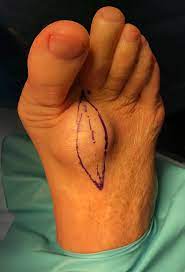
An ankle syndesmosis injury, also known as a high ankle sprain, occurs when there is damage to the syndesmotic ligaments that connect the tibia and fibula bones in the lower leg. This type of injury is often caused by a twisting or rotational force on the ankle, such as a sudden change in direction or landing from a jump.
Symptoms of an ankle syndesmosis injury may include pain and swelling above the ankle joint, difficulty bearing weight on the affected leg, and a feeling of instability in the ankle joint. The pain may be more diffuse and spread out compared to a regular ankle sprain.
Treatment for an ankle syndesmosis injury may depend on the severity of the injury and the patient’s overall health. Mild to moderate injuries may be treated with rest, ice, compression, and elevation (RICE therapy), along with the use of pain relievers and anti-inflammatory medications to help manage pain and reduce swelling.
In more severe cases of ankle syndesmosis injury, immobilisation in a cast or boot may be necessary to allow the ligaments to heal. Physical therapy may also be recommended to help improve range of motion and strengthen the muscles around the ankle joint.
In very severe cases or cases that are not responsive to conservative treatment, surgery may be necessary to repair or reconstruct the damaged ligaments. Recovery time can vary depending on the severity of the injury and treatment methods used. It is important to seek prompt medical attention for an ankle syndesmosis injury to ensure proper diagnosis and treatment.







